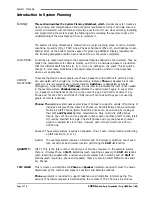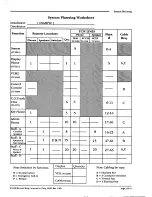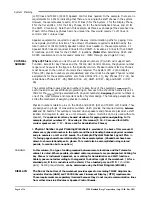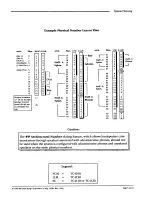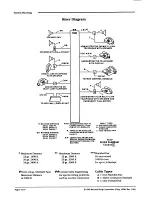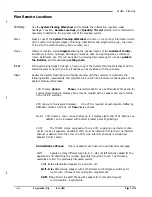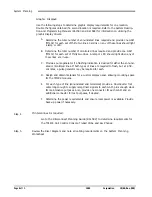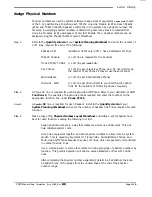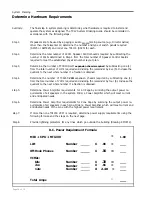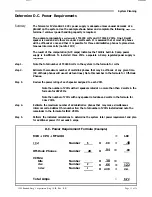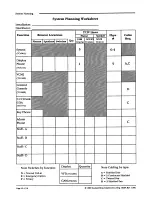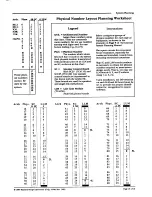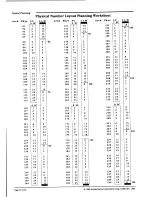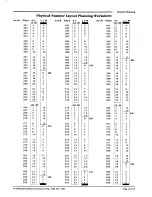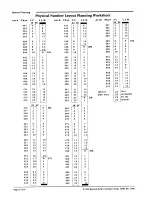
System Planning
Introduction to System Planning
Summary:
FUNCTIONS:
REMOTE
LOCATIONS:
QUANTITY:
TCIV LINES:
This section describes the System Planning Worksheet, which
provides space for creating a
clear, concise, and comprehensive listing of system requirements. Using it will help ensure a
correct and sucessful cost estimate and provide a useful tool for use when ordering, installing,
and programming the system. Read the following while reviewing the example to get a full
understanding of the worksheet and how to complete it.
The System Planning Worksheet is divided into six major planning areas: Function, Remote
Locations, Quantity (Qty.), TCIV Lines, Physical Numbers (Phys. #), and Cabling. An ad-
ditional block at the bottom provides space for planning additional Display requirements.
The following paragraphs explain each area and how it should be completed.
Functions are chosen according to the operational features desired by the customer. They es-
tablish the requirements for Remote Location and TCIV Line hardware. Space is provided so
that four different Staff functions (A, B, C, D) can be defined on one sheet. This should be
enough in most cases. Definitions and special notes should be written on the worksheet
where ever appropriate.
These are the stations where people use Phones, Speakers, and Switches to perform a func-
tion associated with a single line. In the example, a
1 in
any
Phone
or Speaker block indi-
cates one unit is required at each remote location.
Switches
are designated by type
E
(Emergency), N (Normal), and
P (Privacy).
A horizontal line indicates the item is not needed
in the example system.
Shadowed areas
indicates the option doesn’t apply in any system.
(i.e., Speakers and Switches cannot be on the same line as a Call Control Console or Key
Phone and TC4160 VCM’s and TC4171 COA’s require TCIV lines but they are not used by
people at remote locations).
Phones: The
example system uses several types of phones to support a variety of functions. It
includes a Display Phone, three Key Phones, an Administrative Phone, and twenty
Multi-Link Staff Phones. (Note: Multi-link phones can be identied by looking at
their LLM
and Physical
Number requirements. Only multi-link staff phones
require one LLM line and one physical number each.) Another Staff Function (Staff-
D) could be specified for single- link staff phones and only one physical number
would be required for all of them. However, each of them would use a Phone
SCC25 line.
Speaker: The example system requires 43 speakers. One at each remote location performing
a Staff function (A, B, or C).
Switch: The example system requires 15 Normal and 15 Emergency switches: one of each
type of switch at each remote location performing the
Staff - B
function.
(QTY.): This is the total number of each type of Function required. In the example system
there is: 1 Display Phone, 8
Staff - A
stations (each requiring a speaker), 15
Staff - B
stations
(each requiring a speaker with a normal and an emergency call-in switch), and 20
Staff - C
stations (each requiring a phone and speaker). There are also 6 Central Office Trunks and 3
Key Phones.
This is where you determine the
Phone
and
Speaker
hardware required to meet the needs
determined by the number and types of Functions and Remote Locations.
Phone
equipment is required to support telephone and hands-free intercom paths. The
amount of hardware required is determined by the number of TC4 150 Line-Link Module
Page
2
of
16
1989
Rauland-Borg Corporation (Orig. 10/88; Rev. l/89)


